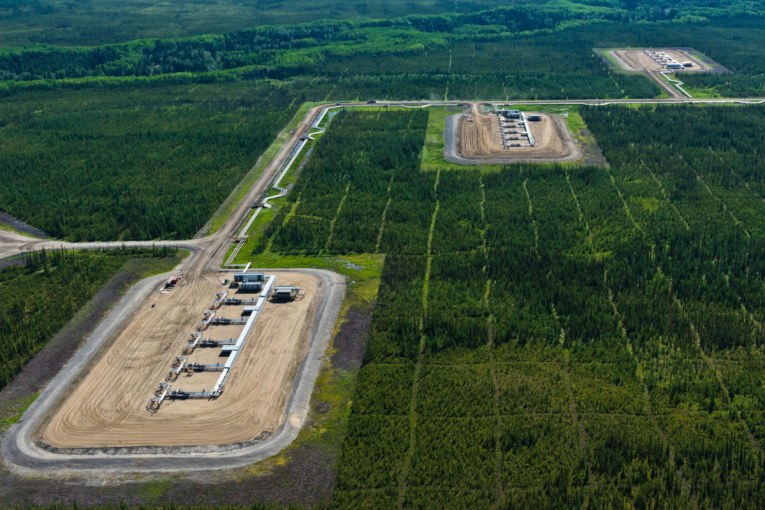
by Michelle Heath and Aaron Foyer
Jun 17th 2021 | Emissions, Energy, Oil & Gas, Oil Markets
Oil sands are located in a number of countries globally like Venezuela, United States, Russia and Canada, with the Athabasca deposit in Alberta being the largest.
In 2019, the world’s total proved oil reserves were determined to be 1.73 trillion barrels, of which 15 countries were responsible for approximately 94%.
The global average oil reserve to annual production ratio (49.9) suggests approximately 50 years of supply. Though oil demand estimates dropped below supply estimates in 2020, the EIA estimates that demand will return to 2019 levels in early 2022.
What are the oil sands?
Oil sands deposits are located in a number of countries globally like Venezuela, United States, Russia and Canada, with the Athabasca deposit in Alberta being the largest. Over 24% of proven oil reserves are in oil sands deposits located in Venezuela (261.8 billion barrels) and Canada (162.4 billion barrels).
Oil sands are a mixture of sand, clay and water saturated with bitumen, a viscous form of petroleum. There is a high level of fixed costs associated with an a plant, however, once a plant starts producing, it rarely stops producing. According to Rystad Energy’s recent global liquid supply curve, production across the various processes globally require a Brent break-even average price of $83 U.S. per barrel.
Venezuela’s Orinoco oil sands have a lower viscosity than Canada’s, which allows for the oil to be developed using conventional methods. However, recently political unrest in Venezuela and economic sanctions has constrained development of this massive resource base.
Canada has the third largest share of reserves in the world, 169.7 billion barrels of which 96% are oil sands. In 2019, oil sands accounted for 63% of Canada’s oil production or 2.95 million barrels per day (NRCan). Total capital investment in 2019 is estimated at $325 billion of which $10.2 billion occurred in 2019.
The two methods used for extracting bitumen from in Canada are open-pit mining and in-situ. Mining, used when the resources are less than 75 metres underground, is responsible for 50% of the current production and 20% of the reserves.
Operations in Canada
In situ is required for the remaining 50% of the current production and 80% of reserves. Currently, steam assisted gravity drainage (SAGD) is the most employed form of in-situ, where steam is injected into the reservoir causing the bitumen to become more fluid and capable of being pumped to the surface.
The Canada Energy Regulator’s Evolving Scenario for the production of raw bitumen by type which assumes lower oil prices and higher carbon costs than the Reference Scenario, indicates SAGD grows 71% over the projection period and mining is 1% higher in 2050 than in 2020. The Reference Scenario in 2050, with a West Texas Intermediate oil price of US$71 per barrel in 2019 has production rising to 4.3 million barrels per day in 2050.
The bitumen extracted in either process is thick and viscous thus needing to be upgraded or diluted so it can be pipelined to refineries as feedstock. Canada has 6 bitumen upgraders, the largest located in Lloyminster, situated on the Alberta/Saskatchewan border.
Bitumen Upgraders
According to NRCan, 12% of Canada’s total greenhouse gas emissions are attributed to oil sands development and 0.2% of global emissions. Between 2000 and 2018, the emissions intensity dropped about 36% due to technological advancements and efficiencies but environmental challenges remain relative to residual waste, water requirements and air emissions.
Abbreviations:
CCRL – Consumers Co-operative Refinery Limited
CNOOC – China National Offshore Oil Corporation
NRCan – Natural Resources Canada
NGLs – natural gas liquids
Pre-FID – Awaiting Final Investment Decision
SCO – synthetic crude oil
VGO – vacuum gas oil
Sources:
https://www.bp.com/content/dam/bp/business-sites/en/global/corporate/pdfs/energy-economics/statistical-review/bp-stats-review-2020-full-report.pdf
https://www.nrcan.gc.ca/science-data/data-analysis/energy-data-analysis/energy-facts/crude-oil-facts/20064
https://www.nrcan.gc.ca/our-natural-resources/energy-sources-distribution/clean-fossil-fuels/oil-sands-extraction-and-processing/18094
https://www.cer-rec.gc.ca/en/data-analysis/canada-energy-future/2020oilsands/2020-oil-sands.pdf
https://www.cer-rec.gc.ca/en/data-analysis/canada-energy-future/2017-oilsands/canadas-energy-future-2017-supplement-oil-sands-production-appendix.html
https://www.cer-rec.gc.ca/en/data-analysis/canada-energy-future/2020oilsands/2020-oil-sands.pdf
https://www.cer-rec.gc.ca/en/data-analysis/canada-energy-future/2020oilsands/index.html
https://www.oilsandsmagazine.com/technical/properties
https://www.oilsandsmagazine.com/projects/bitumen-production
https://www.oilsandsmagazine.com/energy-statistics/world#supplydemand
https://www.oilsandsmagazine.com/projects/bitumen-upgraders#Capacity
Share This:
More News Articles
You can read more of the news on source



